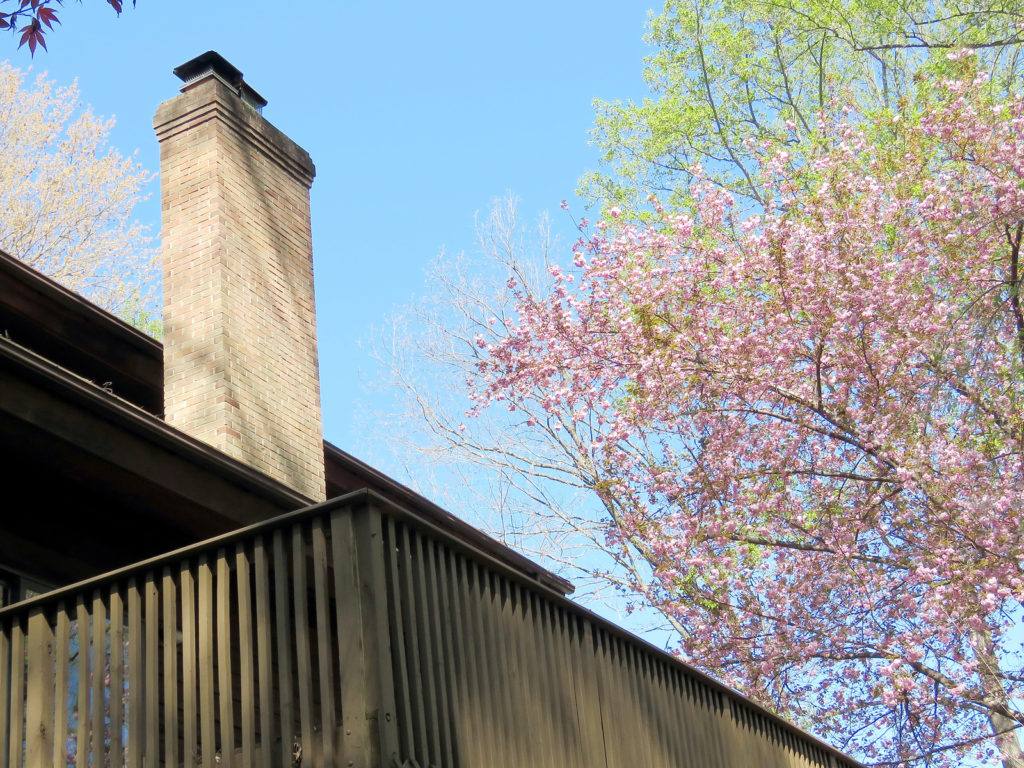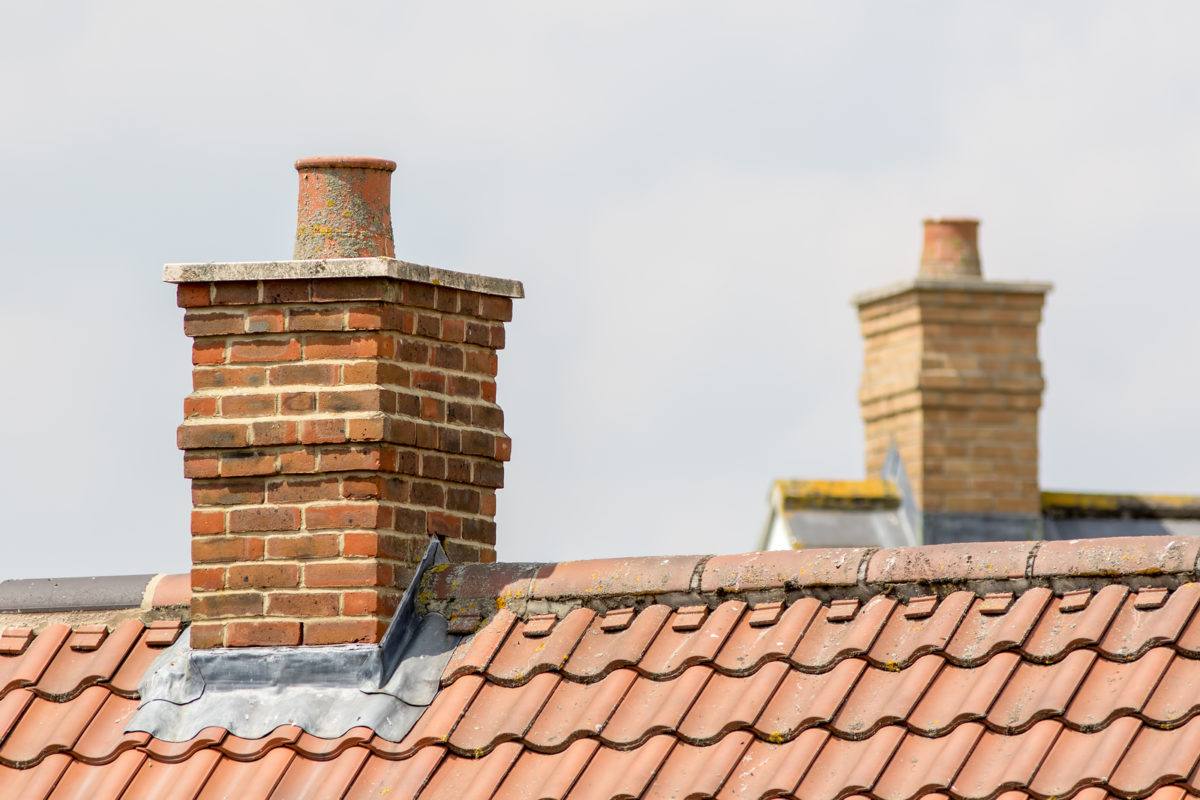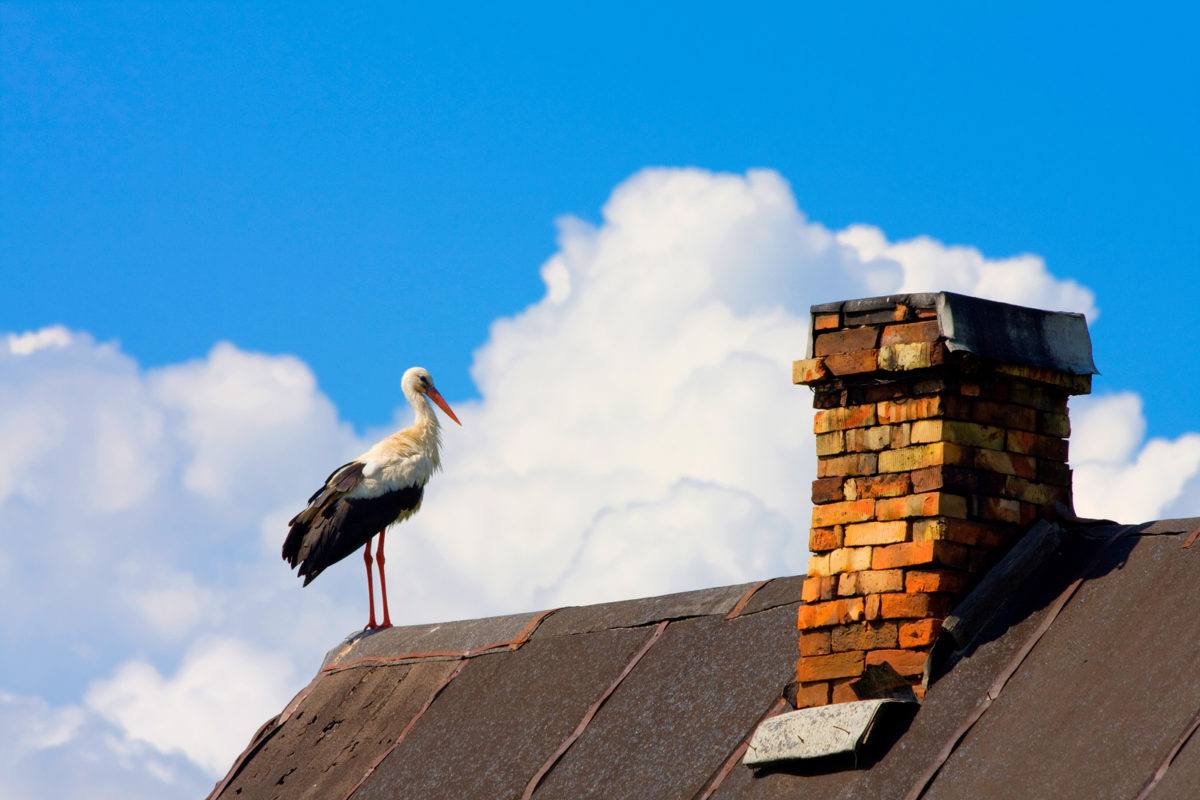A chimney is designed to safely and effectively remove dangerous fire byproducts produced within the fireplace. When it becomes clogged, it can’t properly perform this important role. Birds’ nests, tree foliage, trash, and other debris can clog your home chimney, making it dangerous to use. Soot and crumbling bricks are also hazardous; if the chimney’s flue is not kept clean, your home is at risk every time you kindle the fireplace. Your home’s structure and age may also play a part in the overall health of its chimney. Determine if there is a blockage in your chimney, or if it needs chimney flue repair, by looking at it yourself or hiring a professional maintenance company.
WARNING SIGNS OF A BLOCKED CHIMNEY
A blocked chimney may be hard to diagnose on your own but there are some telltale signs to watch for. These warning signs include:
- A smoky smell when burning a fire
- Falling debris inside the hearth
- Water streaks inside the flue
- Excessive soot
- White residue on the flue walls
WHAT CAN CAUSE A CHIMNEY BLOCKAGE?
There are three main causes of chimney blockages:
- An excessive build-up of soot or creosote (tar)
- Birds, squirrels, or other small animals nesting in the chimney
- The collapse of the internal chimney bricks
INSPECTING THE CHIMNEY
1. Wear a safety mask or goggles for eye protection. Don a pair of gloves and place a handkerchief over your mouth and nose to keep you from inhaling loose, falling soot. Wear a hard hat to protect your head. Chimneys that have not been periodically cleaned may have a lot of debris.
2. Open the chimney’s maintenance door. Typically, it is located outside the house, but check your home’s blueprints for the exact location. Hold the mirror through the maintenance door, facing upward. With your other hand, shine the flashlight on the mirror. Adjust the angle to allow you to see up into the chimney.
3. Inspect the chimney flue from the outside of the building and again from the inside of the fireplace. Open the damper, and shine the flashlight up the walls with the mirror. See if you can insert a broom handle or long stick through the fireplace opening.
4. Feel the heat. When a clogged fireplace is operating, heat and moisture will back up into the home. When the chimney is unused, during summertime, for example, soot from a wood-burning fireplace or rust debris from the metal hood of a gas fireplace can amass.
CHIMNEY FLUE REPAIR
Clearing a blocked chimney is a job best left for a professional. They have the tools necessary to reach and remove the debris clogging the flue. How quickly and easily the chimney is cleared will depend on how compact the blockage is. To prevent clogs in the future, an annual chimney cleaning is recommended. Regular cleanings will keep your flue clear while also warning you of any potential problems before they turn into costly chimney flue repair. Installing a chimney cap onto the flue can also help limit the number of clogs your chimney experiences. Stopping debris from entering the system in the first place, caps can provide a proactive approach to chimney maintenance.
If you suspect a blocked chimney, contact a professional for assistance. We can diagnose and treat common chimney ailments both large and small.



